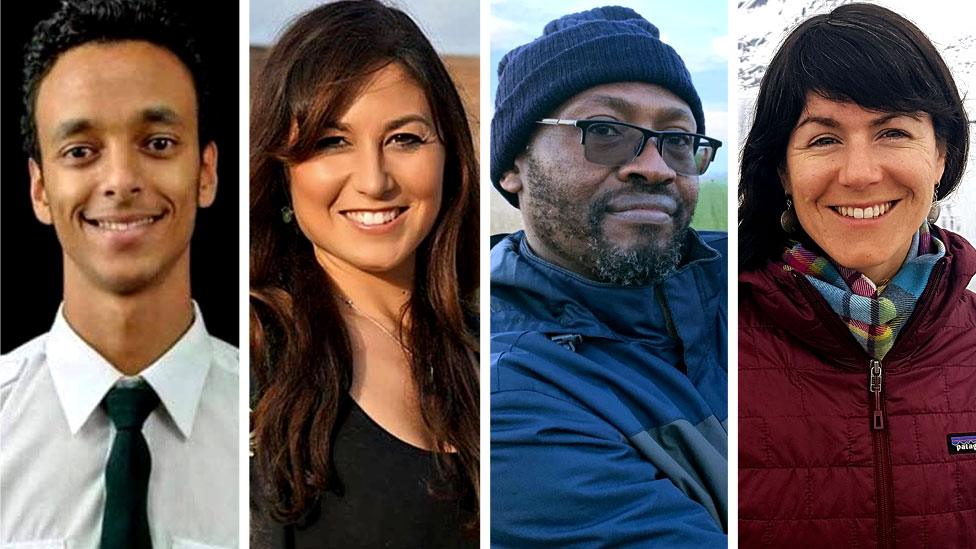Boeing: French investigators find crash 'similarities'
- Published
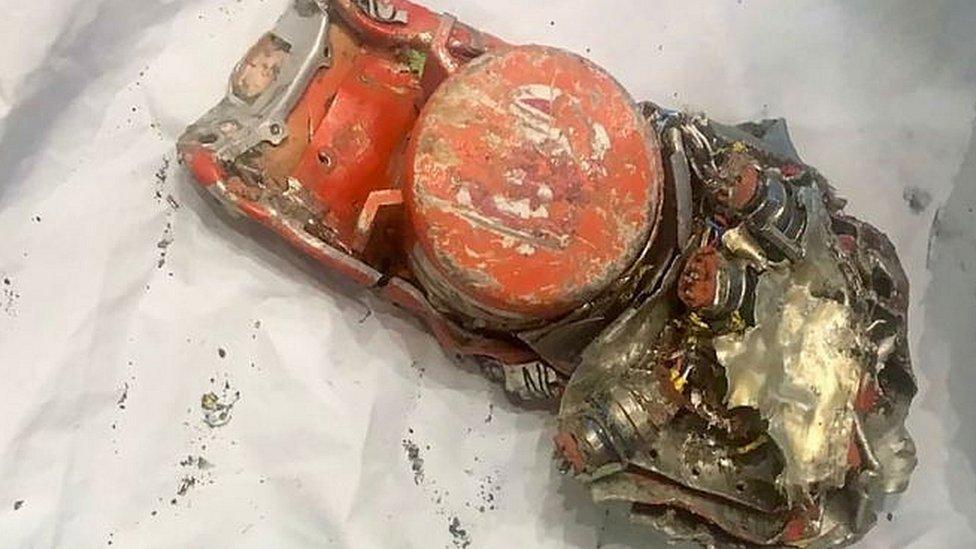
One of the black boxes recovered from the Ethiopian Airlines crash site
Investigators examining black box recordings from the doomed Ethiopian Airlines flight have found "clear similarities" with a previous crash.
Last week's crash of a Boeing 737 Max was the second disaster involving the aircraft type in five months.
The French BEA accident authority did not detail the similarities, but media reports suggested they found similar flight angles before the crashes.
It comes amid continuing questions over 737 Max's design and vetting to fly.
Regulators across the world have grounded the aircraft until further notice.
In a short statement on Monday, the Paris-based BEA, whose experts have been asked by Ethiopian Airlines to examine the black boxes, said: "During the verification process of the FDR (flight data recorder) data, clear similarities were noted by the investigation team between Ethiopian Airlines Flight 302 and Lion Air Flight 610, which will be the subject of further study during the investigation."
Both the Ethiopian Airlines flight eight days ago and a Lion Air aircraft in October crashed within minutes of take-off.
In the case of the Lion Air flight, pilots had difficulties with a new system on the Boeing 737 Max which is designed to keep the plane from stalling.
Questions
It prevents a jet from pointing upwards at too high an angle, where it could lose its lift.
But an investigation of the Lion Air flight showed the automatic anti-stalling system repeatedly forced the plane's nose down more than 20 times.
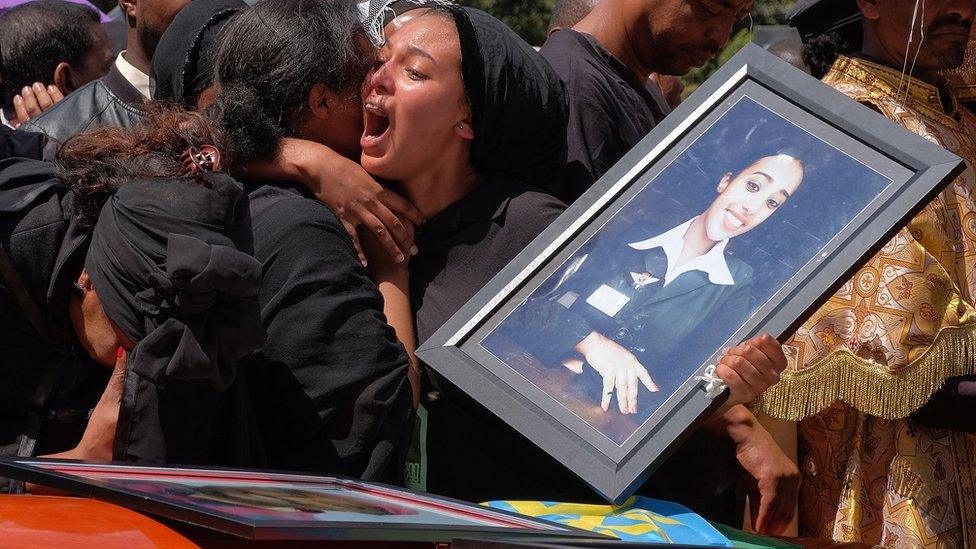
A memorial service was held at the weekend for those who perished on Ethiopian Airways flight
Ethiopia's Transport Ministry and the US Federal Aviation Administration (FAA) have both pointed to similarities between the two disasters.
US regulators and safety experts are now asking how thoroughly the FAA and Boeing vetted the anti-stall system and how well pilots around the world were trained for it when their airlines bought new planes.
Over the weekend, a report in The Seattle Times, external claimed that some analysis before the crash found that the system, called the Maneuvering Characteristics Augmentation System, revealed crucial flaws.
It claims that managers at the FAA instructed its safety engineers to delegate safety assessments to Boeing and to approve the resulting analysis.
The report alleges that the analysis produced by Boeing understated the power of the control system and that it could reset itself every time the pilot responded.
This meant that the system could repeatedly push the nose of the plane down.
The FAA said its "aircraft certification processes are well established and have consistently produced safe aircraft designs."
"The 737-MAX certification program followed the FAA's standard certification process," it added.
Boeing has been contacted for comment.
The world's biggest planemaker says the 737 Max is safe, but after the Lion Air crash last year it began plans to roll out a new software upgrade.

Analysis: Theo Leggett, BBC international business correspondent
Both Ethiopia's transport minister and, now, France's air accident investigation bureau, the BEA, have said there similarities between two Boeing 737 Max crashes.
So where did this information come from? Well, last week, the BEA was given the job of downloading data from the plane's black boxes - the flight data recorder (FDR) and the cockpit voice recorder (CVR).
This it was able to do relatively quickly. The sound files from the voice recorder - which monitors pilots' conversations and other noises within the cockpit - were sent directly to Addis Ababa, without being listened to.
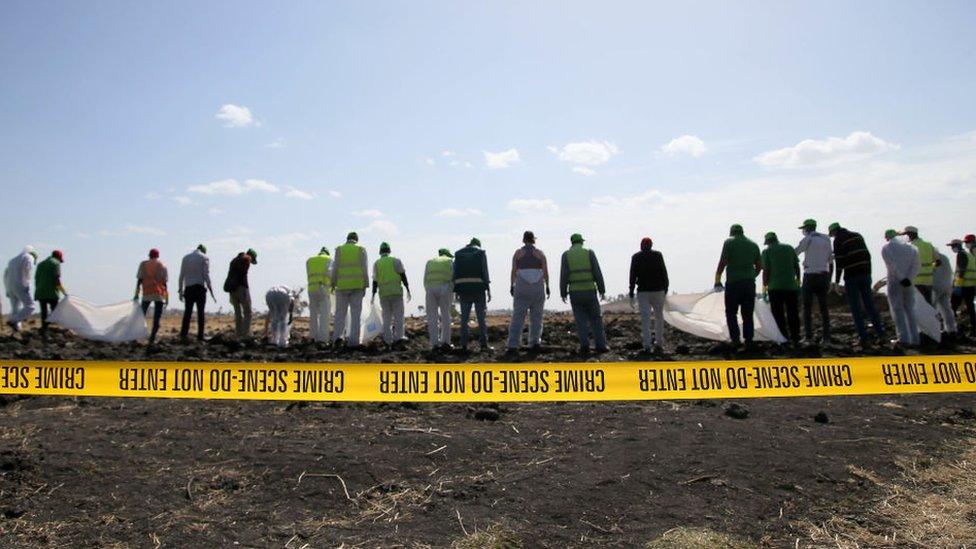
However, when it came to the FDR, the agency needed to make sure that the mass of data it was downloading was readable and not corrupted. It therefore brought a few basic parameters up on screen to verify them. We don't know exactly what those parameters were, but they were enough to reinforce the theory that the two aircraft suffered similar problems during flight.
The Ethiopian transport ministry obviously now has all of this information - but it also has evidence gathered at the scene of the crash and satellite tracking data.
The next step is to carry out a proper analysis of the contents of both flight recorders. It is impossible to say how long that will take. Nor is it clear who will carry out the analysis. Ethiopia could ask the BEA, use its own experts, or request help from another agency altogether. However, the authorities there have promised a preliminary report within 30 days.
That could give a reasonable indication of what happened. It may help to show whether the aircraft was brought down by technical failures, design flaws, pilot error or a combination of all three.
But the question of why it happened and who was ultimately at fault may take much longer to answer. The full investigation could take years.

- Published17 March 2019
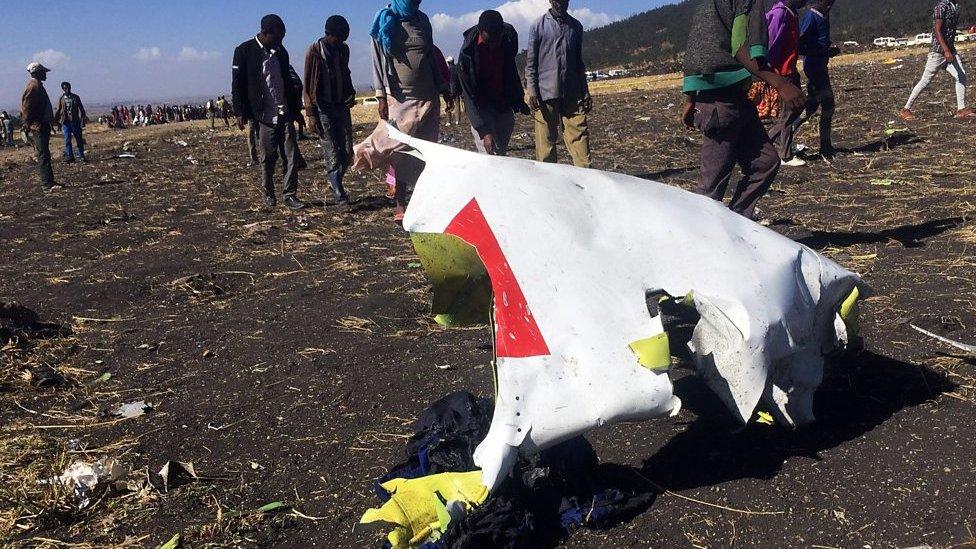
- Published14 March 2019

- Published4 April 2019
